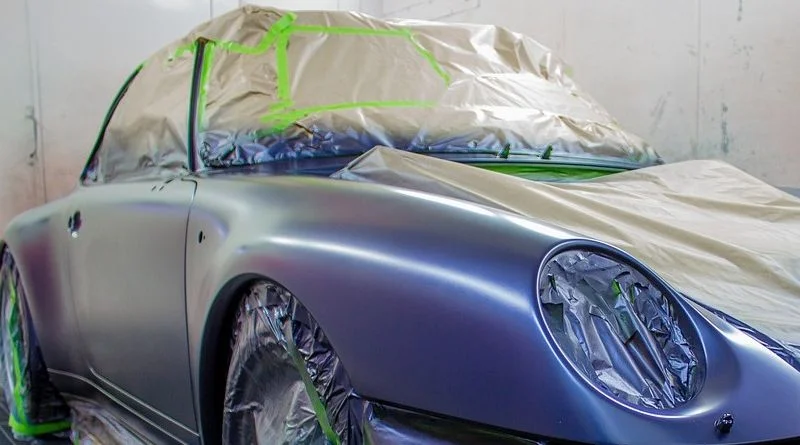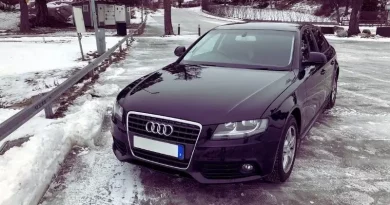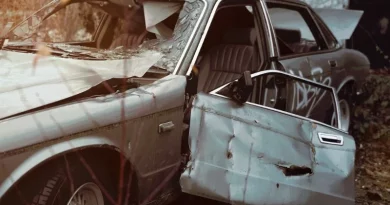What is the Difference between Vinyl Wrap, Ceramic Coating and Paint Protection Film?
Last updated on July 19th, 2024 at 07:47 am
As car owners strive to maintain their vehicle’s glossy exterior, paint protection film has emerged as the top choice for many. This film acts as a shield against environmental factors and everyday wear-and-tear, providing a cost-effective solution for preserving the vehicle’s appearance. Unlike vinyl wrap or ceramic coating, paint protection film offers superior protection that is long-lasting. However, you may be wondering what exactly paint protection film is, how much it costs, and why hiring a professional installer is essential. In this blog post, we’ll provide answers to these questions to help you make an informed decision on whether PPF (paint protection film) is the right fit for your vehicle.
Difference between Vinyl Wrap, Ceramic Coating and Paint Protection Film
Vinyl wrap, ceramic coating and paint protection film are all protective solutions for your car’s paint. Before investing in any of these products, it is essential to comprehend the distinctions between them and their respective benefits and drawbacks.
Vinyl wrap is an attractive option for many car owners due to its affordability and easy installation, but it may be difficult to remove if a change of color or design is desired. It also provides good coverage over large areas with minimal effort. However, vinyl wraps can be difficult to remove if you decide you don’t like the look or want to switch colors down the road. Plus, they won’t protect against scratches as well as other options on the market.
Ceramic coatings are widely sought after to safeguard cars from UV rays and chemicals that can degrade the paint job. Boasting a higher level of protection than vinyl wraps, these coatings feature hydrophobic properties which facilitate easy cleaning by repulsing dirt and grime particles. Reapplying ceramic coatings regularly is advised, depending on how often you drive your car; otherwise it might need a bit more maintenance sooner than expected. Keywords: Ceramic Coating, Vinyl Wrap Protection Film
It is important to understand the differences between vinyl wrap, ceramic coating and paint protection film in order to make an informed decision about which option best suits your car. Hiring a professional for installation of the PPF in Brampton can ensure that it is done correctly and will last longer than if you were to do it yourself.
Pros and Cons of Paint Protection Film
A thin, transparent film that offers an extra layer of protection for a vehicle’s paintwork is known as paint protection film (PPF). PPF offers an extra layer of protection to guard against scrapes, blemishes, and other harm caused by flying stones or road debris. While PPF has its advantages, there are also some drawbacks to consider before investing in this product.
PPF can provide extra defense from the environment such as UV radiation and dirt, thus keeping your car’s paint job looking pristine for a longer period. This helps preserve the look of your car’s paint job for years to come. Additionally, it helps reduce swirl marks caused by washing or waxing your vehicle which makes maintaining a clean finish easier over time. Furthermore, PPF is relatively inexpensive compared to other forms of automotive paint protection such as ceramic coatings or vinyl wraps so you don’t have to break the bank if you want added protection for your car’s exterior surface.
PPFs offer good scratch resistance, however they do not guarantee immunity from all damages such as deep gouges or major chips caused by large stones impacting at high speeds on roads with poor surface conditions where potholes may be present. Moreover, regular maintenance is necessary to keep the PPF in top condition; this includes cleaning and polishing every few months depending on how often you drive and exposure level, otherwise yellowing may occur over time leading to discoloration which renders them less effective.
Some people mistakenly believe that once installed their cars will never need any form of detailing again; however, this simply isn’t true. Even though protective films provide great coverage against minor damages like light scratches, regular maintenance still needs to be done just like normal vehicles without them including washing and waxing in order to keep their shine and clarity intact over long periods of use. Otherwise, those same minor scratches might become more visible over time due to lack of proper care given towards them. However, when taken proper care of these paint protection films can last up to 5-7 years providing maximum value out of the investment made into them.
Overall, paint protection film can be a great investment for car owners who want to protect their vehicle’s exterior. Yet, it is essential to contemplate the advantages and disadvantages of utilizing this product prior to making any decisions. Moving on, let us now take a look at the differences between vinyl wrap, ceramic coating and paint protection films.
What is the Downside of PPF?
Installing and maintaining PPF can be expensive, requiring a certain level of expertise to ensure proper application and prevent bubbling or peeling. It also requires a high level of skill to properly apply the film, as improper installation can lead to bubbling or peeling in certain areas. PPF will also need regular maintenance such as cleaning and waxing, which can add up over time. Ultimately, certain PPF may not be effective in shielding against wear-and-tear induced scrapes or other harm.
Conclusion
To sum up, paint protection film is an excellent investment for car owners who want to safeguard their vehicles from adverse weather conditions and maintain their value. While it may come at a higher cost, it is undoubtedly worth every penny in terms of preserving your car’s appearance over an extended period. To ensure optimal results, it is always recommended to hire a professional to install the PPF correctly, given their expertise in this field and ability to guarantee quality workmanship. With proper care and maintenance, your car’s paint will remain protected for years to come using paint protection film.




